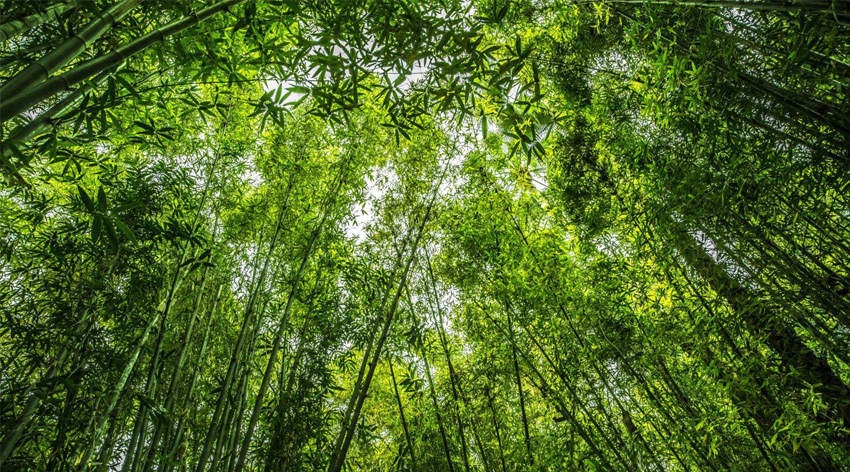Global plastic ban policy and bamboo industry development opportunities!
Global plastic ban policy and bamboo industry development opportunities!
The dangers of plastic pollution
一:Waste plastic products are difficult to recycle and degrade
Since the invention of plastic production technology at the end of the 19th century, plastic products have quickly become an indispensable part of People's Daily life because of their lightweight, strong, high plasticity and low cost. However, a large amount of plastic waste is difficult to be decomposed by nature and will be left in nature for a long time, thus destroying the ecological environment and even endangering humans and animals and plants. It is estimated that between 19 million and 23 million tons (11% of the total plastic waste) of plastic waste generated globally entered aquatic ecosystems in 2016, and this figure will be as high as 53 million tons by 2030.
The difficulty of recycling plastic waste is a major problem in solving plastic pollution. Chemicals added to plastic products and plastic food packaging contaminated with food waste make plastic recycling difficult and costly. About 300 million tons of plastic waste is generated worldwide each year, of which only 14% is recycled and only 9% is reused.
Plastic pollution, once established, is usually irreversible. There have been attempts to use biodegradable plastics to solve the problem of plastic pollution, but it has not been able to really solve the problem.
二:Plastic pollution seriously threatens the survival of Marine life
Plastic has caused serious harm to Marine life. According to the UN Environment Programme, when corals in the ocean come into contact with plastic, the probability of coral disease increases from 4% to 89%, and corals can also ingest microplastics. Plastic waste is one of the most serious human threats facing seabirds and Marine animals. According to statistics, more than 2 million seabirds and more than 100,000 Marine animals are harmed by eating plastic waste every year. Moreover, due to the increasing plastic pollution in the ocean, the chance of this kind of ingestion is increasing every year.
三:Microplastics enter the human body along the food chain and threaten human health
Microplastics refer to plastic particles less than 5 mm in diameter, which can be further broken down into nanoparticles. Microplastics mainly come from the natural weathering of waste plastics, the loss of tiny fibers on clothing, and a large number of scrub particles in cosmetics or cleaning products, which enter the water body with sewage, causing serious harm to the environment and organisms. Small Marine organisms will ingest microplastics into the body, large Marine organisms will ingest microplastics in the body of small organisms while they prey on small organisms, and larger organisms tend to ingest more microplastics. In this way, microplastics pass through the food chain layers and accumulate, and finally may enter the human body, causing unexpected diseases. Microplastics can also interact with soil animals, affecting their health and the function of the soil.
The development opportunity of bamboo industry under the situation of plastic ban
In view of the increasingly serious harm caused by plastic pollution to the global environment, the plastic ban has become a global consensus, and countries and international organizations around the world have put forward a timetable for banning plastic. At present, looking for plastic alternatives is an effective way to reduce plastic use and reduce plastic pollution, which also brings opportunities for the development of plastic alternatives industry. Bamboo and bamboo products due to rich resources, fast growth, renewable, wide use of products and green, low-carbon, sustainable, recyclable and degradable advantages, will become the best substitute for plastic products.
一:Bamboo is the best substitute for plastic
1) Bamboo resources are abundant and widely distributed around the world. The global bamboo forest area exceeds 47 million hm2 and the annual output of bamboo exceeds 500 million tons. Bamboo is the fastest growing plant in the world, it can be harvested in 3 to 4 years, and the bamboo shoots every year, high yield, a afforestation, can be sustainable use.
2) Bamboo is widely used, and new products and technologies continue to emerge. China is the largest and most advanced country in the development of bamboo industry, driven by modern technology, bamboo forest cultivation and bamboo processing technology has made remarkable achievements, and the industry has begun to take shape. At present, more than 10,000 kinds of bamboo products have been developed, involving all aspects of people's production and life such as clothing, food, housing, transportation and use. With the advancement of technology, there will be more new materials and new products that can replace plastics.
3) Bamboo has realized the whole bamboo utilization, almost no waste, from bamboo leaves, bamboo liquid to bamboo roots can be used, bamboo waste can also be used as carbon and activated carbon.
4) Bamboo products can be quickly completely natural and harmless degradation after use, and will not have harmful effects on the environment.
二:Using bamboo instead of plastic can reduce carbon emissions and slow down climate change
At present, all countries in the world are trying to achieve the dual-carbon goal of "carbon peak" and "carbon neutrality". Replacing plastic with bamboo can effectively reduce carbon emissions and help achieve the "double carbon" goal.
Bamboo and its products reduce greenhouse gas emissions in three ways: Bamboo grows fast and sequesters carbon; Bamboo durable goods can store carbon for a long time, maintaining a low or even zero carbon footprint throughout the product life cycle; Bamboo can replace wood and energy-intensive, high-emission plastics, concrete and steel, thereby saving energy and reducing emissions.

CONTACT US
Name: daisy han
Mobile:13505640801
Tel:0564-8912222
Whatsapp:13505640801
Email:daisy@scjimao.com
Add:Berlin Village Liushusan Road Shucheng Town Lu’an City Anhui Province P.R China
 Send Email
Send Email Grace
Grace daisy
daisy Grace
Grace